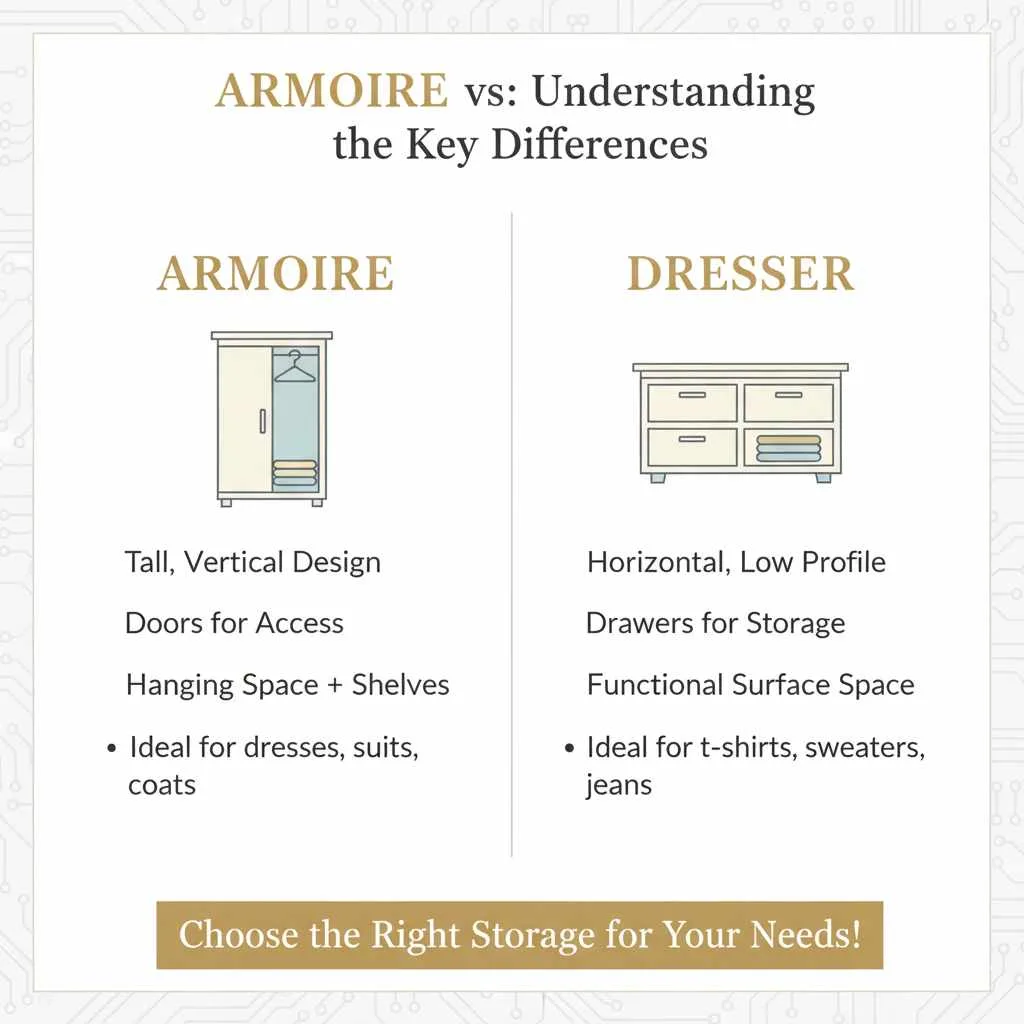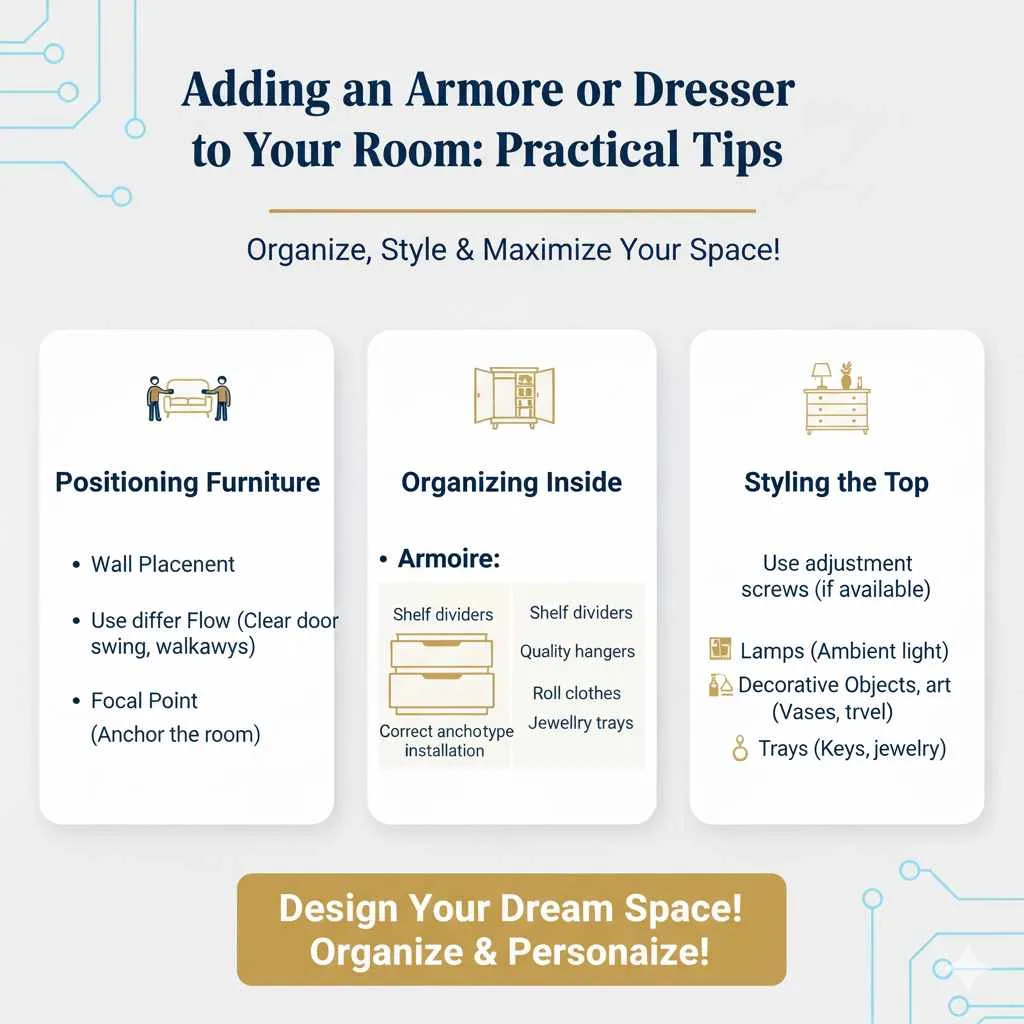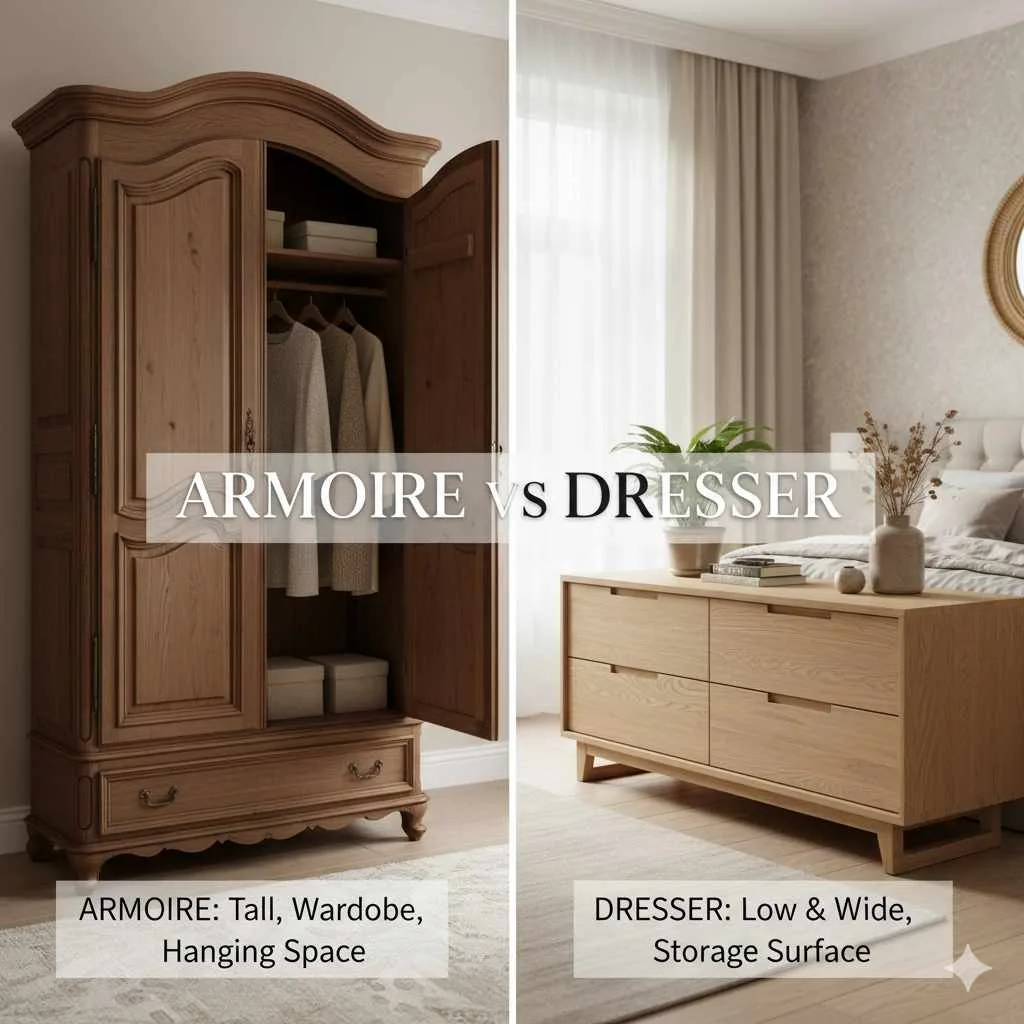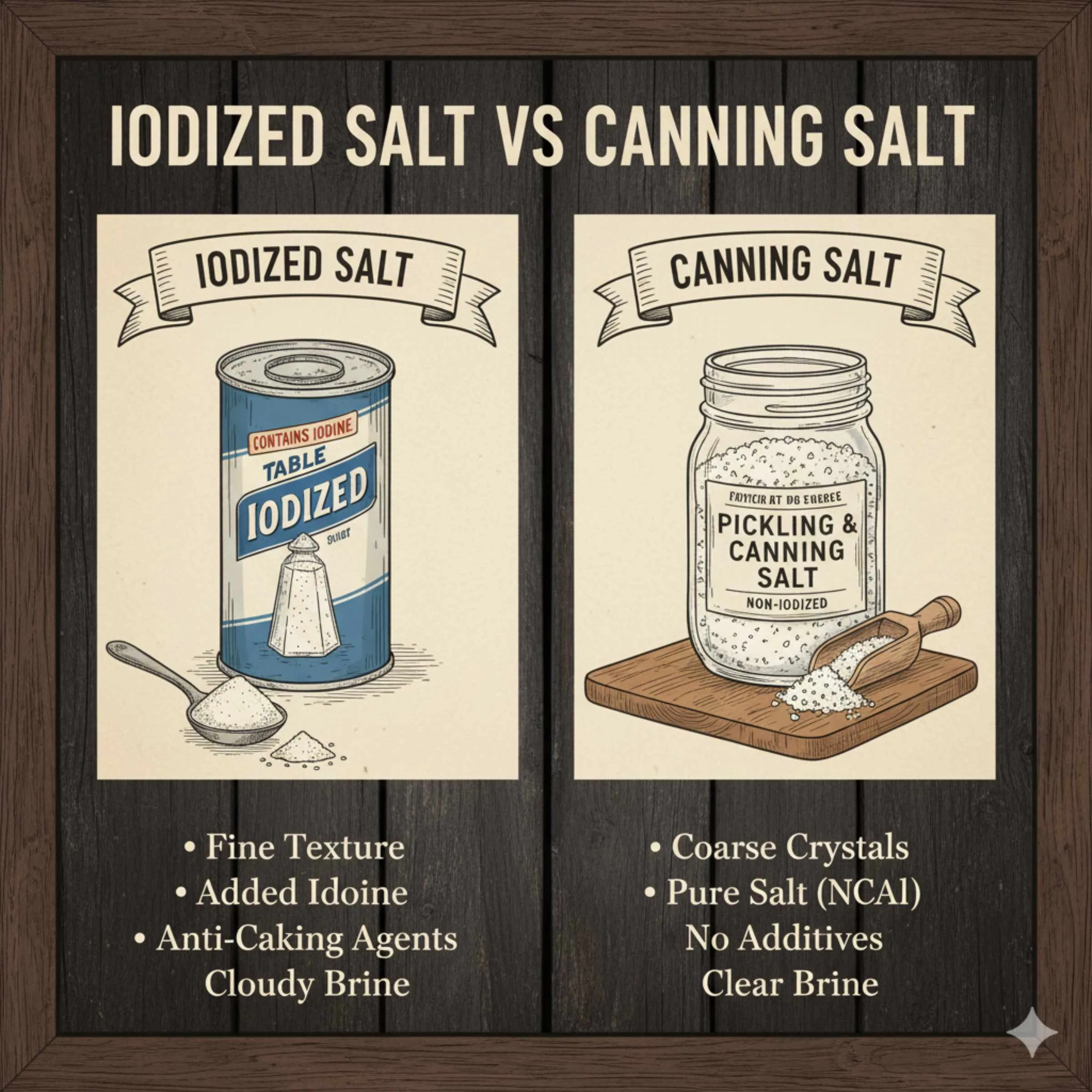Quick Summary:
An armoire is a tall, freestanding cabinet with doors and shelves, often used for hanging clothes or storage. A dresser is a chest of drawers, primarily designed for folded clothes. While both offer clothing storage, their design and functionality differ significantly.
Choosing the right furniture for your bedroom can feel a little overwhelming, especially when common pieces like armoires and dressers seem so similar. You’ve seen them in furniture stores and online, and they both seem to hold clothes. But what’s the real difference? And which one is right for your space? Don’t worry, we’ve all been there! I’m here to simplify things for you. We’ll break down exactly what makes an armoire an armoire and a dresser a dresser, so you can make an informed decision that makes your room feel even more beautiful and functional. Get ready to feel confident about your furniture choices – it’s easier than you think!
Armoire vs. Dresser: Understanding the Key Differences
Let’s dive into the heart of the matter: what exactly separates an armoire from a dresser? While both are designed to house your clothing and keep your bedroom tidy, their fundamental construction and intended use are quite distinct. Think of it like choosing between a tall closet and a sturdy chest – they both store things, but in different ways.
What is an Armoire?
An armoire, often called a wardrobe, is essentially a large, freestanding cupboard or closet. Its defining features include:
- Tall and Vertical Design: Armoires are typically much taller than they are wide, emphasizing vertical storage.
- Doors: They almost always feature two (or sometimes more) doors that open to reveal the interior space.
- Interior Configuration: Inside, you’ll usually find a combination of hanging space (a rod for clothes on hangers) and shelves. Some might have drawers at the bottom, but the primary focus is on hanging storage.
- Historical Context: Historically, armoires were more than just furniture; they were important pieces of furniture, often ornately carved and used to store valuables, linens, and clothing in homes that didn’t have built-in closets. You can learn more about the history of furniture design on resources like The Metropolitan Museum of Art’s Heilbrunn Timeline of Art History, which often features early examples of armoires.
Because of their structure, armoires are ideal for items that are best kept on hangers, such as dresses, suits, long coats, and shirts. They can also hold folded items on shelves and sometimes even serve as a place to stash shoes or accessories.
What is a Dresser?
A dresser, on the other hand, is primarily a chest of drawers. Its core characteristics are:
- Horizontal Design: Dressers are generally wider than they are tall, with a lower profile.
- Drawers: The main component of a dresser is its set of drawers, designed for easy access to folded clothing.
- Surface Space: The top of a dresser is also a very functional surface, often used for placing lamps, decorative items, or personal accessories.
- Variations: Dressers come in various sizes, from short and wide to tall and narrow chests, but the prominent feature will always be the drawers.
Dressers are perfect for storing items like t-shirts, sweaters, jeans, pajamas, and undergarments that don’t require hangers and are easily organized in drawers.

Armoire vs. Dresser: A Comparative Table
To make the differences even clearer, let’s look at a direct comparison:
| Feature | Armoire | Dresser |
|---|---|---|
| Primary Function | Hanging clothes, storing items on shelves | Storing folded clothes in drawers |
| Design Emphasis | Vertical storage, doors | Horizontal storage, drawers |
| Height | Taller | Shorter, wider |
| Interior Layout | Hanging rod, shelves, sometimes drawers at base | Multiple drawers |
| Best For | Dresses, suits, long coats, formal wear, items needing hanging space | T-shirts, sweaters, jeans, pajamas, casual wear that folds well |
| Historical Role | Freestanding closet, valuable storage | Chest for folded linens and clothing |
Why the Distinction Matters for Your Home
Understanding the difference between an armoire and a dresser isn’t just about semantics; it’s about making smart choices for your living space, your lifestyle, and the specific needs of your wardrobe. When you choose the right piece, you’re not just filling a space – you’re optimizing it for comfort and organization.
Maximizing Your Bedroom Space
Armoires: These vertical wonders are fantastic for smaller rooms or rooms with limited closet space. By extending upwards, they utilize vertical real estate, which can make the floor space feel more open. If you have a collection of dresses, formal wear, or items that wrinkle easily, an armoire will serve you much better than a dresser alone.
Dressers: While typically lower, a dresser can still be a space-saver, especially a narrower, taller chest of drawers. Its functional top surface also adds value, allowing you to consolidate items that might otherwise clutter your nightstand or desk. For everyday wear that you typically fold, like t-shirts and sweaters, a dresser offers convenient, accessible storage.
Wardrobe Needs and Habits
Your personal clothing collection is a huge factor. Do you have a lot of items that need to hang? Think about:
- A person who owns many blouses, shirts, dresses, and suits will benefit greatly from an armoire’s hanging space.
- Someone whose wardrobe consists mostly of t-shirts, activewear, and casual pants will find a dresser more practical for everyday access.
It’s also common to use both! Many people have a dresser for folded basics and an armoire (or a separate closet system) for hanging items. It’s all about finding the right balance for your specific needs.
Aesthetic and Style Considerations
Both armoires and dressers come in countless styles, materials, and finishes, allowing them to fit into any decor. However, their designs lend themselves to different looks:
- Antique or Vintage Armoires: These can be stunning focal points, adding a touch of old-world charm and grandeur to a bedroom. They often feature detailed carvings, decorative hardware, and unique silhouettes.
- Modern Dressers: Sleek, minimalist dressers with clean lines and ample drawer space are popular in contemporary and Scandinavian-inspired interiors.
- Farmhouse or Rustic Styles: You can find charming wooden armoires and distressed dressers that evoke a cozy, country feel.
The choice can significantly impact the overall feel of your room. An armoire can act as a statement piece, while a dresser might blend more seamlessly, providing functional storage without drawing too much attention, or it can also be styled beautifully on top.
Choosing the Right Furniture for Your Room
So, how do you decide which piece of furniture is the perfect fit for your home? It really comes down to a few key questions about your space and how you live.
Assess Your Space
Before you fall in love with a piece of furniture, measure your room. Think about:
- Available Floor Space: How much room do you have to dedicate to storage? A narrow space might benefit from a taller armoire, while a wider but shorter area might accommodate a dresser.
- Ceiling Height: High ceilings can handle a grand armoire, making it a dramatic feature. Low ceilings might feel better with a more grounded dresser.
- Existing Furniture: Do you already have other large pieces? Ensure the armoire or dresser you choose complements the scale and style of what you already own.
Evaluate Your Wardrobe
Take a quick inventory of your clothes:
- Hanging Items: Count how many shirts, dresses, suits, coats, and other items you regularly hang.
- Folded Items: Estimate the volume of sweaters, t-shirts, jeans, pajamas, and undergarments you typically fold.
A good rule of thumb is that if more than half your wardrobe needs hanging, an armoire (or at least significant hanging space) is essential. If most of your clothing is folded, a dresser might be your primary need.
Consider Your Lifestyle
Think about how you use your bedroom and your clothes:
- Daily Habits: Do you prefer to grab an outfit quickly in the morning? Easy access to folded clothes in drawers might be key.
- Seasonal Storage: Do you rotate your wardrobe seasonally? An armoire with shelves can be great for storing out-of-season clothes in bins.
- Neatness Factor: Some people find it easier to keep items neat in drawers, while others prefer having their hanging clothes visible or neatly organized within an armoire.
Armoire and Dresser Styles to Inspire You
The world of furniture design is vast and beautiful! Let’s explore some popular styles for both armoires and dressers:
Armoire Styles
- Classic & Traditional: Often made of dark woods like mahogany or cherry, these feature carved details, raised panels, and ornate hardware.
- French Country/Provincial: Known for their elegant curves, distressed finishes, and sometimes painted exteriors, offering a romantic feel.
- Modern & Minimalist: Clean lines, sleek finishes (like high-gloss or natural wood veneers), and simple hardware define this style.
- Shabby Chic: Painted finishes, often in soft pastels, with visible wear and tear for a vintage, romantic look.
Dresser Styles
- Mid-Century Modern: Characterized by tapered legs, clean lines, and often made from walnut or teak wood.
- Farmhouse: Rustic wood finishes, sometimes with plank details or a distressed look evoke a cozy, country vibe.
- Industrial: A combination of wood and metal, often with dark finishes and robust hardware.
- Contemporary: Features a wide range of sleek designs, from handleless drawers to bold geometric shapes and mixed materials.
No matter your personal taste, there’s an armoire or dresser out there that will not only meet your storage needs but also enhance your room’s aesthetic. For inspiration on specific design styles and how to incorporate them, you can explore resources like Architectural Digest’s bedroom design ideas.
Adding an Armoire or Dresser to Your Room: Practical Tips
Once you’ve decided which piece is right for you, here are some practical tips to make the most of your new furniture:
Positioning Your Furniture
- Wall Placement: The most common spot is against a wall. Consider where natural light falls and how it will affect the appearance of the furniture.
- Room Flow: Ensure the doors of an armoire can open fully without obstruction and that the dresser doesn’t block walkways.
- Focal Point: A beautifully designed armoire can be a stunning focal point. A dresser can anchor one side of the room, balancing other furniture.
Organizing Inside
- Armoire: Use shelf dividers for folded items, invest in good quality hangers for your clothes, and consider small bins or baskets for accessories on shelves.
- Dresser: Drawer dividers are your best friend! Use them for socks, underwear, jewelry, and other small items. Roll t-shirts and casual wear for easy visibility and access.
A well-organized interior means you’ll spend less time searching for what you need and more time enjoying your beautiful space. For practical advice on organizing drawers and closets, the U.S. Environmental Protection Agency (EPA) offers great tips on reducing waste and reusing items, which can extend to how you organize your belongings.
Styling the Top of Your Dresser or Armoire
Don’t forget the surface! It’s prime real estate for adding personality:
- Lamps: Provide ambient lighting and add height.
- Mirrors: Can make the room feel larger and more inviting, and are essential for last-minute checks before you head out.
- Decorative Objects: Vases, sculptures, framed photos, or small plants add character.
- Trays: Great for corralling smaller items like keys, jewelry, or perfumes.

Frequently Asked Questions (FAQ)
Q1: Can an armoire be used as a dresser and vice versa?
While you can technically put folded clothes in an armoire’s shelves or hang things in a dresser (though it’s not ideal), it’s best to use each for its intended purpose for optimal organization and ease of use. An armoire with drawers at the bottom can function somewhat like a dresser.
Q2: What is the typical height of an armoire?
Armoires are generally taller than dressers, often ranging from 6 feet to 7 feet or even higher, emphasizing vertical storage.
Q3: Are armoires more expensive than dressers?
This can vary greatly by material, craftsmanship, and brand. However, larger, more complex pieces like ornate armoires can sometimes be more expensive than standard dressers.
Q4: Do I need an armoire if I already have a built-in closet?
Not necessarily. An armoire is a great addition if your closet space is insufficient, you have a lot of hanging items, or you want to add a decorative furniture piece to your room. It can also be used for linens, extra bedding, or non-clothing storage.
Q5: What is the difference between a chest of drawers and a dresser?
In common usage, “dresser” and “chest of drawers” are often used interchangeably. However, a dresser typically refers to a wider piece with more drawers, often including a mirror, while a chest of drawers is usually taller and narrower, focusing solely on drawers.
Q6: Can an armoire be used for storage other than clothes?
Absolutely! Armoires are very versatile. They can be used to store linens, blankets, books, electronics (like a hidden TV cabinet), kitchenware, or even as a craft storage station.
Q7: Is it better to buy an armoire or a dresser for a small bedroom?
For a small bedroom, a taller armoire that utilizes vertical space can sometimes make the room feel more open than a wide, low dresser. However, a narrow, tall chest of drawers can also be a great space-saving option. It depends on your wardrobe needs and the specific dimensions of your room.
Conclusion
Navigating the world of bedroom furniture doesn’t have to be complicated. By understanding the distinct features and purposes of an armoire versus a dresser, you’re now well-equipped to make a choice that perfectly suits your space, your style, and your organizational needs. Whether you opt for the vertical elegance of an armoire, the practical convenience of a dresser, or a combination of both, remember that the goal is to create a room that feels both beautiful and functional for you.
Think about your wardrobe, the layout of your room, and the aesthetic you love. With this knowledge, you can confidently select furniture that not only stores your belongings but also enhances the comfort and personality of your personal sanctuary. Happy decorating!








Leave a Reply